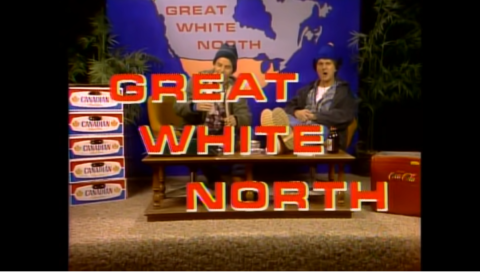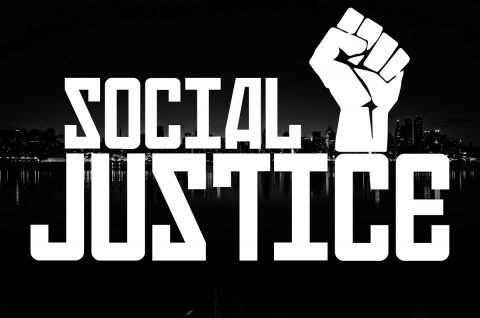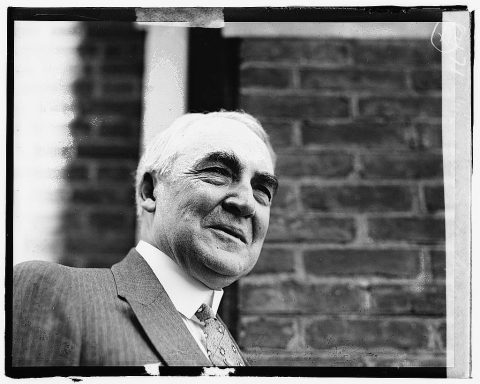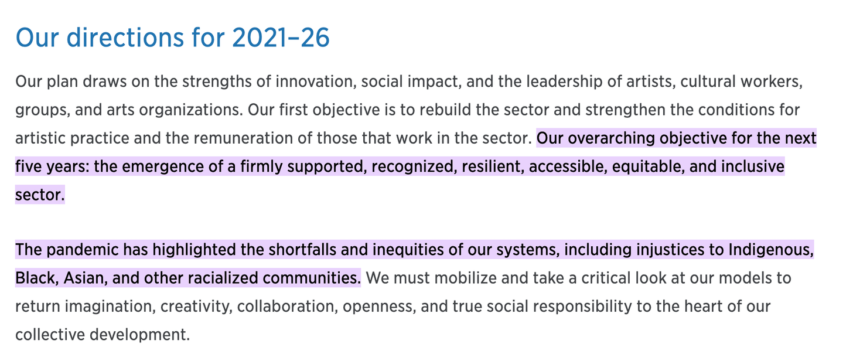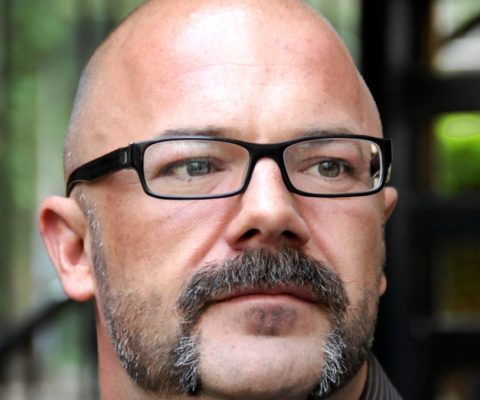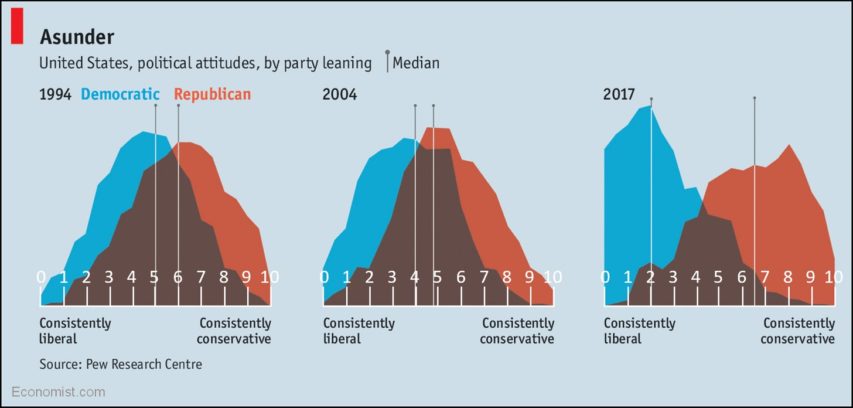This story also points out another problematic issue, one that is the focus of the entire collection (or indeed, Jemisin’s entire career): Racial Identity. This issue could probably be the subject of another whole essay, and the fact that I would be excoriated up and down for writing it would be a condemnation of the rigidly politically correct conformist turn SF fandom has taken, and greater society as a whole.
The reason Racial Identity fails in Science Fiction is because there are only a few ways to cover the topic, and they are extremely limited in impact. They’ve been done to death, and there’s virtually no way to breathe new life into them without making them even less authentic.
The first is what you see in this story. Race as an utterly unimportant factor. We are told by the Narrator that it doesn’t matter – that racially specific descriptors are still used but they don’t carry the negative connotations they do (or at least that she claims they do) in our usage. But if the race of the one highlighted character doesn’t matter in a postulated SF world, then guess what, it doesn’t matter at all. The story could be told with a character of any race in that role if it truly did not matter in that world. Race would be mere window dressing. The only use of that character’s race in this story was to bludgeon the reader with accusations of racism while being straw-manned into saying that who she is is somehow shocking.
Even worse, this opens up the author (unless she’s a black woman) to criticisms of tokenism, or ignoring racial issues, or whitewashing over them. Our friend the “Social Worker” could be accused of “Acting White” since her behavior isn’t specifically ethnic. (This unavoidable criticism becomes a straitjacket on the writer.) But addressing that leads to the next sort of problem.
The second way that Racial Identity fails in Science Fiction is a current-day parable set in the future. If your story set a hundred or a thousand years in the future has race relations that haven’t changed a bit from the current day attitudes, then what is the point? Are you saying that they will never improve? Is racial equality a futile dream, destined to be sabotaged forever by society? That’s pretty dismal. But it could be worse …
The third way, rarely seen, is that relations could be even worse. I haven’t yet encountered any in my own reading, but I imagine the result would take the form of stories set in some kind of racial civil war. And even if the author takes the side of the Black Union, the result really isn’t that far from the fever dreams of the readers of The Turner Diaries. Oh, I suppose it might find an audience in the self-loathing white SJWs who hand out Hugos who feel they deserve to see themselves destroyed by proxy, or militant racial separatists on the other side. But are either of these really that large of an audience, and even if they are, do you really want to serve them?
I suppose the fourth is the Inversion tale. But given how the audience for the third way to write these things reacts to an example like Farnham’s Freehold, their desire to read a racial revenge fantasy has to be tempered by the risk of being declared a racist by their fellows.
By the way, you could say the same thing for almost any form of identity politics. And while it’s possible to have these as an element in the worldbuilding of your stories, to make them the centerpiece of your tale simply kneecaps your tale from the outset. There are four ways to do it, but all of them are wrong. Social Justice has made it so, and the only way to get a pass depends on the skin color of the author.
Dr. Mauser, “Message Received”, Shoplifting in the Marketplace of Ideas, 2019-01-30.
May 8, 2022
May 5, 2022
QotD: Critical Race Theory, the “successor ideology”
The reason “critical race theory” is a decent approximation for this new orthodoxy is that it was precisely this exasperation with liberalism’s seeming inability to end racial inequality in a generation that prompted Derrick Bell et al. to come up with the term in the first place, and Kimberlé Crenshaw to subsequently universalize it beyond race to every other possible dimension of human identity (“intersectionality”).
A specter of invisible and unfalsifiable “systems” and “structures” and “internal biases” arrived to hover over the world. Some of this critique was specific and helpful: the legacy of redlining, the depth of the wealth gap. But much was tendentious post-modern theorizing. The popular breakthrough was Ta-Nehisi Coates’ essay on reparations in the Atlantic and his subsequent, gut-wrenching memoir, Between The World And Me. He combined the worldview and vocabulary of CRT with the vivid lived experience of his own biography. He is a beautifully gifted writer, and I am not surprised he had such an emotional impact, even if, in my view, the power of his prose blinded many to the radical implications of the ideology he surrendered to, in what many of his blog readers called his “blue period”.
The movement is much broader than race — as anyone who is dealing with matters of sex and gender will tell you. The best moniker I’ve read to describe this mishmash of postmodern thought and therapy culture ascendant among liberal white elites is Wesley Yang’s coinage: “the successor ideology”. The “structural oppression” is white supremacy, but that can also be expressed more broadly, along Crenshaw lines: to describe a hegemony that is saturated with “anti-Blackness”, misogyny, and transphobia, in a miasma of social “cis-heteronormative patriarchal white supremacy”. And the term “successor ideology” works because it centers the fact that this ideology wishes, first and foremost, to repeal and succeed a liberal society and democracy.
In the successor ideology, there is no escape, no refuge, from the ongoing nightmare of oppression and violence — and you are either fighting this and “on the right side of history”, or you are against it and abetting evil. There is no neutrality. No space for skepticism. No room for debate. No space even for staying silent. (Silence, remember, is violence — perhaps the most profoundly anti-liberal slogan ever invented.)
And that tells you about the will to power behind it. Liberalism leaves you alone. The successor ideology will never let go of you. Liberalism is only concerned with your actions. The successor ideology is concerned with your mind, your psyche, and the deepest recesses of your soul. Liberalism will let you do your job, and let you keep your politics private. S.I. will force you into a struggle session as a condition for employment.
Andrew Sullivan, “What Happened To You?”, The Weekly Dish, 2021-07-09.
May 2, 2022
QotD: Online education
The great online-ening of the past year has shown just how useless so much of the modern “economy” is. To take just the most obvious example, ask any teacher how important face-to-face instruction is. If you’d asked them before March, you’d be forgiven for thinking that teaching is some kind of super-skilled, rocket scientist-level job that only years of training and fanatical, monk-like dedication can prepare you for. Post-COVID, and “education” means “log in, look at the Powerpoint, and answer the multiple choice quiz … you know, whenever you feel like it. Or don’t, it’s all good, because following schedules and completing assignments is racist.”
And that’s just college, which now more than ever is exactly what the sententious goobers on the faculty always said it was: A professional football team with a few classrooms attached. They’re memory-holed now, no doubt, but I recall a time over the summer when a few studies on the impact of online “learning” came out. They were worse than even I expected, and I’m cynical enough to give Diogenes wood. Some huge fraction of kids never even bothered logging on. At all. And, of course, they were promoted to the next grade …
Severian, “More Scattered Thoughts”, Rotten Chestnuts, 2020-10-13.
April 2, 2022
Jon Stewart believes that “… the only thing that can possibly explain racial inequality today in America is still ‘white supremacy'”
Andrew Sullivan recounts his experiences on one of Jon Stewart’s shows:
… I found out, in fact, that there would be two other guests, and that it would, indeed, be a debate. Surprise! As the show started, I also realized for the first time there was a live studio audience and that the episode was called “The Problem With White People” — a title I’d never have been a party to, if I’d known in advance. (I wouldn’t go on a show called “The Problem With Jews” or “The Problem With Black People” either.) At that point I should have climbed carefully off the stake, tamped down the flames, made a path through the kindling, and walked away.
I protested to the producers that I’d been ambushed. And to be fair, they gave me the option of backing out at the last minute. But I didn’t want to leave them in the lurch, reassured myself that Stewart was a pro, and said I’d go ahead. I just assumed he wouldn’t demonize or curse at a guest; he would moderate; he would entertain counter-arguments; he would defend fair play. After all, this was the man who had lacerated Crossfire for bringing too much heat and not enough light. He believed in sane discourse. He was a liberal, right?
Wrong.
On the race question, Stewart has decided to go way past even Robin DiAngelo, in his passionate anti-whiteness. His opening monologue was intoned at times in a somber tone, as if he were delivering hard truths that only bigots could disagree with. He argued that no one in America had been prepared to have an honest discussion about race — until the “reckoning” of 2020. He also suggested that nothing had been done by whites to support African-Americans from 1619 (yes, he went there) … till now. The most obvious solution — reparations — was, he implied, somehow, absurdly, taboo.
His montage of “black voices” insisted that African-Americans are still granted only conditional citizenship, are still barred from owning property — “we don’t own anything!” — and ended with Sister Souljah — yes! — explaining that the thing that kills black people are not bullets, but white people. This is the same moral avatar who once said: “If black people kill black people every day, why not have a week and kill white people?” Stewart then hailed Angela Davis — a proud Communist, with a particular fondness for East Germany’s suppression of dissent — and warmly thanked her as “Angela”. But Stewart included not a single black voice of disagreement or nuance. He apparently believes that all black people hold the same view. And all white people just refuse to hear it.
Jon Stewart’s insistence that Americans had never robustly debated race before 2020 is also, well, deranged. Americans have been loudly debating it for centuries. There was something called a Civil War over it. His claim that white America has never done anything in defense of black Americans (until BLM showed up, of course) requires him to ignore more than 300,000 white men who gave their lives to defeat the slaveholding Confederacy. It requires Stewart to ignore the countless whites (often Jewish) who risked and gave their lives in the Civil Rights Movement. It requires him to erase the greatest president in American history. This glib dismissal of all white Americans throughout history, even those who risked everything to expand equality, is, when you come to think about it, obscene.
Stewart’s claim that whites never tried to ameliorate black suffering until now requires him to dismiss over $19 trillion of public funds spent in the long War on Poverty, focused especially on black Americans. That’s the equivalent of more than 140 Marshall Plans. As Samuel Kronen has shown, it requires the erasure from history of “the Food Stamp Act of 1964, the Child Nutrition Act of 1966, the Social Security Amendments of 1965, the Elementary and Secondary Education Act of 1965, the Social Security Amendments of 1962, and the Economic Opportunity Act of 1964, and on and on.” To prove his point, Stewart has to pretend LBJ never existed. That’s how utterly lost he now is.
Stewart then used crude metrics of inequality to argue, Kendi-style, without any evidence, that the only thing that can possibly explain racial inequality today in America is still “white supremacy”. Other factors — concentrated poverty, insanely high rates of crime and violence, acute family breakdown, a teen culture that equates success with whiteness, lack of affordable childcare — went either unmentioned or openly mocked as self-evident expressions of bigotry. He then equated formal legal segregation with voluntary residential segregation, as if Jim Crow were still in force. And he straw-manned the countering argument thus: white America believes that African-Americans are “solely responsible for their community’s struggles”.
I don’t know anyone who believes that. I sure don’t. It’s much more complex than that. And it’s that complexity that some of us are insisting on — and that Stewart wants to dismiss out of hand in favor of his own Manichean moral preening. His final peroration ended thus: “America has always prioritized white comfort over black survival.” Note: always. There has been no real progress; white people have never actually listened to a black person; America is irredeemably racist. Those fucking white men, Lincoln and LBJ, never gave a shit.
March 29, 2022
March 24, 2022
What a bunch of hosers! Take off, eh?
In The Line (which is operating on skeleton staff due to March break), Laura Mitchell considers the existential question of Canadian nationhood: what if we’re just a bunch of hosers?
Remember Bob and Doug MacKenzie? I’m old enough to have owned a bag featuring this pair, Canada’s quintessential Hosers. But for those of you who might not remember, Bob and Doug were a pair of TV characters played by Canadian comedians Rick Moranis and Dave Thomas, who played up Canada’s silly, self-deprecating sense of humour on SCTV.
[…]
Now, The Canadian Encyclopedia has a definition and an entry to define this particular personality subtype, and it’s not terribly flattering:
Hoser: is a slang word for a Canadian of limited intelligence and little education.
I profoundly disagree. Hoser is all of us and we are all hosers.
Hidden in the silliness of baby bottle beer chugging and yodelling, there is subtle genius to the premise behind these characters (beyond the genius of the entire concept, of course — Bob and Doug sketches were cheekily and overtly mocking “CanCon” rules by providing government regulators content that was wildly over the top in its stereotypical portrayal of an average Canadian). In this particular sketch, we see just two normal dudes concerned about local matters and asking basic questions. They don’t try to be anything more than they are and they don’t apologize.
In the entry above in the Canadian Encyclopedia, there is much hand wringing over the idea that a hoser has to be white. This obviously stems from the fact Rick Moranis and Dave Thomas are white and the skits are set in rural Ontario in the early ’80s, when Canada was noticeably less diverse. But focusing on race misses the point of the whole thing. Hoserdom isn’t racial, it is a state of mind. To be a Hoser is to accept your place in the world and to be at peace with it.
[…]
The Canada of the 21st century is suffering from an identity crisis — somewhere along the line we stopped feeling inferior and began to fancy ourselves superior. Whether it be our health-care system, immigration policies, perceived influence on global affairs or success of some of our celebrities (looking at you, Celine Dion), we took on a feeling of grandiose majesty we simply don’t deserve. Our current prime minister is the personification of this collective delusion — pretty on the outside but hollow and fake beneath. Canada is alarmingly little more than a two-bit Instagram influencer with a closet full of free designer clothes but no ability to pay the gas bill.
March 17, 2022
March 14, 2022
“Mister, we could use a man like Herbert Hoover Warren Harding again …”
Kind words for the oft-maligned 29th president of the United States? Daniel J. Mitchell is all over it:
Today, we’re going to celebrate the fiscal achievements of Warren Harding.
Most notably, as illustrated by this chart based on OMB data, he presided over a period of remarkable spending discipline.
Harding also launched very big — and very effective — reductions in tax rates.
And his agenda of less government and lower tax rates helped bring about a quick end to a massive economic downturn (unlike the big-government policies of Hoover and Roosevelt, which deepened and lengthened the Great Depression).
In an article for National Review last year, Kyle Smith praised President Harding’s economic stewardship.
In a moment of national crisis, Warren G. Harding restored the economic health of the United States … America in 1921 was in a state of crisis, reeling from the worst recession in half a century, the most severe deflationary spiral on record … Unemployment, it is now estimated, stood somewhere between 8.7 and 11.7 percent as returning soldiers inflated the size of the working-age population.
Between 1919 and August of 1921 the Dow Jones average plummeted 47 percent. Harding’s response to this emergency was largely to let the cycle play out … The recession ended in mid-year, and boom times followed. Harding and Congress cut federal spending nearly in half, from 6.5 percent of GDP to 3.5 percent. The top tax rate came down from 73 percent to 25, and the tax base broadened. Unemployment came down to an estimated 2 to 4 percent … Harding was a smashing success in a historically important role as the anti-Wilson: He restored a classically liberal, rights-focused, limited government, and deserves immense credit for the economic boom that kicked off in his first year and continued throughout the rest of the 1920s.
Smith’s article also praises Harding for reversing some of Woodrow Wilson’s most odious policies, such as racial discrimination and imprisoning political opponents (Wilson also had a terrible record on economic issues).
Of course, Harding’s term is much more often remembered for the scandals, and as most modern historians are far more interested in Woodrow Wilson’s bold progressivism they almost always decry Harding and then Coolidge for dismantling a lot of Wilson’s more enthusiastic progressive projects. Even H.L. Mencken — very much not a Wilson fan — found Harding to be not to his taste in turn:
On the question of the logical content of Dr. Harding’s harangue of last Friday, I do not presume to have views … But when it comes to the style of the great man’s discourse, I can speak with … somewhat more competence, for I have earned most of my livelihood for twenty years past by translating the bad English of a multitude of authors into measurably better English. Thus qualified professionally, I rise to pay my small tribute to Dr. Harding. Setting aside a college professor or two and half a dozen dipsomaniacal newspaper reporters, he takes the first place in my Valhalla of literati. That is, he writes the worst English that I have ever encountered. It reminds me of a string of wet sponges; it reminds me of tattered washing on the line; it reminds me of stale bean soup, of college yells, of dogs barking idiotically through endless nights. It is so bad that a sort of grandeur creeps into it. It drags itself out of the dark abysm … of pish, and crawls insanely up to the topmost pinnacle of posh. It is rumble and bumble. It is flap and doodle. It is balder and dash.
March 13, 2022
The Canada Council for the (woke) Arts
In the latest SHuSH newsletter, Kenneth Whyte looks at the origins of the Canada Council for the Arts and compares its original mission to the new direction the crown corporation plans to take:
The Massey Commission (1951), from which all public funding of arts, culture, and scholarly research in Canada derives, and out of which our flagship granting body, the Canada Council for the Arts, was born, knew that it was pushing the nation into perilous terrain. “The dangers inherent” in any system of grants from the central government to arts, letters, and culture was that “the government or its agents would attempt not merely to encourage but to direct” artistic and cultural expression.
The Massey Commission was not the first entity to confront this issue. Much like the Great Canadian Baking Show is a re-staging of the Great British Baking Show, the Massey Commission itself was a knockoff of a UK original (a sad commentary on an initiative intended to define and promote Canada’s unique national identity). The UK effort resulted in the establishment of the British Arts Council, initially chaired by Lord Keynes. Massey quoted him at length on the potential pitfalls of arts funding:
At last the public exchequer has recognized the support and encouragement of the civilizing arts of life as part of their duty. But we do not intend to socialize this side of social endeavour. Whatever views may be held by the lately warring parties, whom you have been hearing every evening at this hour, about socializing industry, everyone, I fancy, recognizes that the work of the artist in all its aspects is, of its nature, individual and free, undisciplined, unregimented, uncontrolled. The artist walks where the breath of the spirit blows him. He cannot be told his direction; he does not know it himself. But he leads the rest of us into fresh pastures and teaches us to love and to enjoy what we often begin by rejecting, enlarging our sensibility and purifying our instincts. The task of an official body is not to teach or to censor, but to give courage, confidence and opportunity.
The founders of the Canada Council felt so strongly about the dangers of political interests imposing themselves on the arts, using federal money to force artistic and cultural activities in one direction or another, that they built checks and balances into its founding legislation. The Canada Council was made a crown corporation, at arm’s length from political types, and its board members were required to “avoid the promotion of any personal interests” or any other specific interests, whether on behalf of regions or “stakeholder groups”.
I can’t speak to the whole of the Canada Council’s activities, but from what I’ve seen of its annual reports, public statements, and funding practices, the Canada Council has jumped the tracks and is now fully dedicated to teaching, censoring, and directing artistic endeavour.
Here’s Simon Brault, chief executive of the Canada Council, giving an enthusiastic endorsement of the core Trudeau government priorities of Indigenous rights and environmental activism:
We need to reimagine an arts sector determined to eliminate racism and discrimination in every form, and the legacy of colonialism. We need to reimagine the arts’ rightful place in the conversations that shape our future. And we need to reimagine, through the arts, a greener and more just and equitable world.
Even if you agree with Brault’s priorities, you have to admit that he is not straightforwardly supporting artistic endeavor but pushing the arts-and-culture sector toward the achievement of a socio-political program.
This mission is also explicit in the Canada Council’s new five-year plan, which has surprisingly little to say about lifting artists and arts organizations out of penury, which some might consider a laudable goal after years of financial crisis and pandemic:
Those are the council’s highlights, not mine.
This past week, the politicization of the Canada Council reached new heights when Brault announced that in solidarity with the Ukrainian people he would cease to fund any “activity involving the participation of Russian or Belarusian artists or arts organizations … This includes partnerships, direct and indirect financing of tours, co-productions, participation in festivals or other events held in Russia.”
March 10, 2022
February 6, 2022
In Critical Race Theory, racism “only applies to powerful whites (and fellow travelers) vis-a-vis powerless blacks”
Andrew Sullivan on Caryn Elaine Johnson (stage name Whoopi Goldberg) and how her unconsidered anti-semitic worldview has been moulded and shaped by Critical Race Theory:
Whoopi Goldberg, I think it’s safe to say, is not a deep thinker, and wouldn’t claim to be. She’s also clearly not an anti-Semite. She’s a talented entertainer and merely reflects many (but not all) of the assumptions of Hollywood types — well-intentioned, rarely ruffled, cultural leftism. But that’s precisely why her comments on The View about antisemitism and the Holocaust are so interesting. They expose some aspects of “anti-whiteness” and “antiracism” as these CRT ideas have trickled down into the public consciousness, and also a deep, long-standing sense among some African-Americans that Jews in America are not usually the oppressed, but often the oppressor. These are things no one wants to explore very much — because it’s complicated, fraught, and, well, who needs the grief?
So here we go! Anti-Semitism is seen as not racism, because for Whoopi, and critical theorists, “racism” is defined as an essentially Euro-American social construction, which didn’t exist before the colonial era, and only applies to powerful whites (and fellow travelers) vis-a-vis powerless blacks. Racism is not, for them, a universal, instinctual, tribal, evolution-rooted suspicion of different-looking others that is always with us, and can happen anywhere. It is solely rather the deliberate, historically contingent oppression of the non-white by colonial “white supremacy”. However much truth this contains about American history (and it does contain a lot of it), it’s a terribly parochial view that misses a huge amount in the world, throughout history, and in America.
As Adam Serwer explains, this parochial view of racism also “renders the anti-Semitism that led to the Holocaust illegible”. Well, yeah. Any theory of racism that cannot explain the Holocaust is not just illegible, it is untenable. It would mean that the conflicts between, say, Tutsis and Hutus, Germans and Slavs, Jews and Arabs, Burmese and Rohingya, or Han and Uighur, are not instances of racism — because they are not examples of “white targeting non-white”. It wouldn’t include the Bible’s description of the Jewish people’s own enslavement by the Pharaohs, for goodness’ sake. And that’s a problem for any concept of racism — let alone one that now controls much of American culture.
Here, for example, is the Anti-Defamation League’s woke definition of “racism” the day Whoopi made her remarks (a definition swiftly changed after the contretemps): “The marginalization and/or oppression of people of color based on a socially constructed racial hierarchy that privileges white people.” But since Jews are deemed “white people”, by this definition, how could the Nazis have been racist? The same would also have to be said, would it not, about Louis Farrakhan today? He may sound like a Nazi about Jews, but his skin color means he cannot be racist.
Whoopi’s gaffe helps explain why the mainstream media now describes young black men assaulting Jews and Asians as expressing … “white supremacy”! This is what the WaPo op-ed page, referring to growing Latino support for Trump, called “multiracial whiteness”. If they are non-white and bigots, they miraculously become white. And notice how bigotry is exclusively ascribed to a single “race”: whites. Without whites, we’d have no racism at all.
This is not the only way critical theorists distinguish anti-Semitism from racism. “Whiteness”, disproportionately including Jewishness, is wrapped up in systems of oppression, especially capitalism, and defined by control of money and power. Robin DiAngelo argues in White Fragility that “white supremacy” exists in mainstream America by noting how many “white people” there were in various positions of power in 2017:
Ten richest Americans: 100 percent white (seven of whom are among the ten richest in the world). US Congress: 90 percent white. US governors: 96 percent white. Top military advisers: 100 percent white. President and vice president: 100 percent white. US House Freedom Caucus: 99 percent white. Current US presidential cabinet: 91 percent white. People who decide which TV shows we see: 93 percent white. People who decide which books we read: 90 percent white. People who decide which news is covered: 85 percent white. People who decide which music is produced: 95 percent white. People who directed the one hundred top-grossing films of all time, worldwide: 95 percent white.
She goes on to emphasize Hollywood’s influence, in particular. Now just put the word “Jewish” where the word “white” is, and her list reads a bit differently, doesn’t it: “People who decide which books we read: 90 percent Jewish. People who decide which news is covered: 85 percent Jewish.” It’s an assertion that one race hoards power, controls the media, and directs the culture, a race so powerful it permeates everything. Sound a little familiar?
February 5, 2022
Why great NFL players rarely make good coaches
In his (mostly) weekly mailbag post, Severian at Founding Questions considers the latest NFL scandal and some of the insane requirements to be a really great NFL quarterback and how few can both play and coach at that high level. First, the Romney Rule scandal:
I see that some black coach has sued the NFL for racial discrimination, and I must say I hope he takes them for every cent they’ve got. From the very little I’ve seen, his case is airtight, because of the NFL’s astounding stupidity. For those who don’t know, the NFL has been using what’s called the “Rooney Rule” for at least two decades now. This states that whenever a head coaching job comes up, the team must interview at least one (and I think two are mandatory now) black candidate.
Since there’s a serious dearth of black coaches at all levels of organized football (we’ll psircle back to that in a minute), this means that the same three or four guys go through the same pro forma interviews every time. As far as I understand it, then (which is not very, admittedly), this particular coach was actually told to his face that this interview with whatever team was just pro forma compliance with the Rooney Rule; we’ve already got our guy, so just fly out here, we’ll buy you lunch, have a nice chat, and put you back on the plane lickety split.
That’s one part of his airtight case. The other is that whatever team he interviewed with also has a Diversity and Inclusion Officer — because of course they do — and the DIE Officer is on record as saying all kinds of typical sanctimonious virtue-signaling shit, e.g. “We are a systemically racist organization and have to do better,” blah blah blah. Put those together, and what else can you conclude except that this coach got screwed out of a job because of explicit racial animus?
But as to why there are so few black NFL coaches, part of it is due to the way young quarterbacks are trained — he discussed this in detail here — which very frequently diverts talented young black quarterbacks away from learning the skillset they would need to make it in the NFL. The other thing is that the skills you need to be a good coach don’t often appear in a person who has the physical ability to be a good player:
If you haven’t met any high-caliber pro athletes, think of professors. The third-rate knockoff cow college I went to had a pretty big league chemist on staff; if he hadn’t won the Nobel he was at least in the conversation, something like that. This guy was a terrible teacher, because he just couldn’t grok that other people couldn’t follow him. Your brain couldn’t fire fast enough to keep up with his, and he couldn’t slow his down enough to let you catch up. The best chemistry teacher was still pretty smart — no dummies in Chem PhD programs, at least not back then — but because he was nowhere near the top guy’s level, he was so much better at explaining the nuts and bolts.
You could ask the low-end guy “What do I need to do to get better at chemistry?” and he could give you some solid, practical advice (I know, because with his help I squeaked out a C-). You asked that of the high end guy, and he’d reply “Be smarter”. (Not really, he was actually pretty cool, personally, but nonetheless that’s really all he could say).
Sports works the same way. While I was there, this same college also hired a former NBA player to coach basketball. Not a Hall of Famer, but a Hall of the Pretty Good-er; if you know basketball from the late 70s, you’ve heard of him. They thought having this guy as a coach would boost recruiting and ticket sales (he was a local notable, too), and it did … for a time, but under his stewardship the team got much worse, and for the same reason the Nobel-candidate chem wiz was the worst teacher. Billy Bigshot would tell his guys “Just go out there and do this and that” … but his guys couldn’t do this and that. Billy could, which is why he was a very good player at the highest professional level; but he couldn’t grok that not everyone could do the same genetic freak shit on the court he could, because they weren’t genetic freaks like him.
Psircling back to the NFL, if you want a race-neutral entry point for discussing this stuff, there you go. Good players are generally terrible coaches, because pretty much by definition good players are genetic freaks who have no idea how they do the things they do; they just do them. Good coaches, on the other hand, tend to be nerdlingers with people skills … another fairly rare combo, it must be said, but nowhere near as rare as a 6’4″ chess master with a big arm. If pro teams really wanted to start thinking outside the box, they’d start recruiting potential coaching candidates at video game tournaments … or straight from high school, where guys have to do much more with much, much less.
January 30, 2022
Fighting progressive illiberalism with populist illiberalism
In the free-to-non-paying-subscribers segment of this week’s Weekly Dish, Andrew Sullivan laments the ratcheting illiberal tactics of both the opponents and supporters of Critical Race Theory in American schools:
I’ve spent a lot of time these past few years concerned with left illiberalism, especially the replacement of liberalism with critical theory as the guiding principle of our republic. But at the same time, of course, right illiberalism has gone into overdrive, in a polarizing vortex. Being a conservative liberal, or a liberal conservative, is becoming close to impossible. And this week, as I pored over a mass of bills to ban the praxis, pedagogy and content of critical theory in public high schools, I felt as if I were being tossed between the blue devil to my left and the deep red sea to my right.
One core point: the illiberalism is real on both sides. Not always in equal measure, now or in the past, but definitely on both, feeding off each other. And in public education, once again a battleground in the culture war, it seems quite obvious to me that the left bears the burden of responsibility for the conflict.
Critical theory’s long march through the institutions reached its peak some time ago in higher education — and has gone on to capture media, corporate America, medicine, the federal government, tech, science, and every cultural institution. Over $14 billion have been spent on philanthropic “equity” initiatives since the summer of 2020 alone. Of course children’s education would be affected. What hasn’t been? And of course critical theorists aim directly at children. The woke, like the Jesuits, understand the value of instilling certain concepts at a very young age. How else to transform the world?
That’s why Ibram Kendi has bequeathed the world not just one but two books on how to rear “antiracist babies”. The publisher says the new one, Goodnight Racism, “gives children the language to dream of a better world and is the perfect book to add to their social justice toolkit.” My italics. Another recent book, Woke Baby, instructs toddlers to be “a good revolutionary”, and another one explains how “activism begins in the cradle”.
You truly think that in school districts where teachers are saturated in equity training, whose unions invite Kendi to be their keynote speaker, that this is all being made up? Just peruse through all the “equity” conferences, courses, syllabi, lesson plans and curricula that now dominate public ed. Many parents found out only because they overheard what their kids were being taught online during the pandemic. Or you can just surf the web as the woke dismantle schools for the gifted, abolish SATs, describe merit as racist, and lay waste to excellent schools merely because too many Asian-American kids are succeeding in them.
What we’re seeing now is the reaction to this left-wing power grab. And — guess what? — it’s a right-wing power grab. If the left has stealthily changed public education from above, the right has now used the only power they have to fight back — political clout in state legislatures. 122 separate bills have been introduced since January 2021, 71 in the last three weeks alone. They all regulate speech by teachers in public schools, but many are now also reaching into higher education — a much more fraught area — and outright book banning. The bills are rushed; some appear well-intentioned; others are nuts; many are very vague, inviting lawsuits to clarify what they can mean in practice. In most cases, if passed, they will surely chill debate of race and sex and history — and increasingly of gender, sex and homosexuality — in high schools. And that’s a bad thing for liberal education.
January 26, 2022
Nazi Breeding Farms – Lebensborn – On the Homefront 014
World War Two
Published 25 Jan 2022With high losses of German soldiers and low birth rates, the Nazis worry about who will inherit the Nazi paradise they are fighting to build. One of their ideas to breed a new Aryan generation is the Lebensborn association.
(more…)
January 6, 2022
QotD: The centre cannot hold … because there’s barely any “centre” remaining
… check out Kevin Drum’s analysis of asymmetric polarization these past few decades. He shows relentlessly that over the past few decades, it’s Democrats who have veered most decisively to the extremes on policy on cultural issues since the 1990s. Not Republicans. Democrats.
On immigration, Republicans have moved around five points to the right; the Democrats 35 points to the left. On abortion, Republicans who advocate a total ban have increased their numbers a couple of points since 1994; Democrats who favor legality in every instance has risen 20 points. On guns, the GOP has moved ten points right; Dems 20 points left.
It is also no accident that, as Drum notes and as David Shor has shown: “white academic theories of racism — and probably the whole woke movement in general — have turned off many moderate Black and Hispanic voters.” This is why even a huge economic boom may not be enough to keep the Democrats in power next year.
We are going through the greatest radicalization of the elites since the 1960s. This isn’t coming from the ground up. It’s being imposed ruthlessly from above, marshaled with a fusillade of constant MSM propaganda, and its victims are often the poor and the black and the brown.
Andrew Sullivan, “What Happened To You?”, The Weekly Dish, 2021-07-09.


